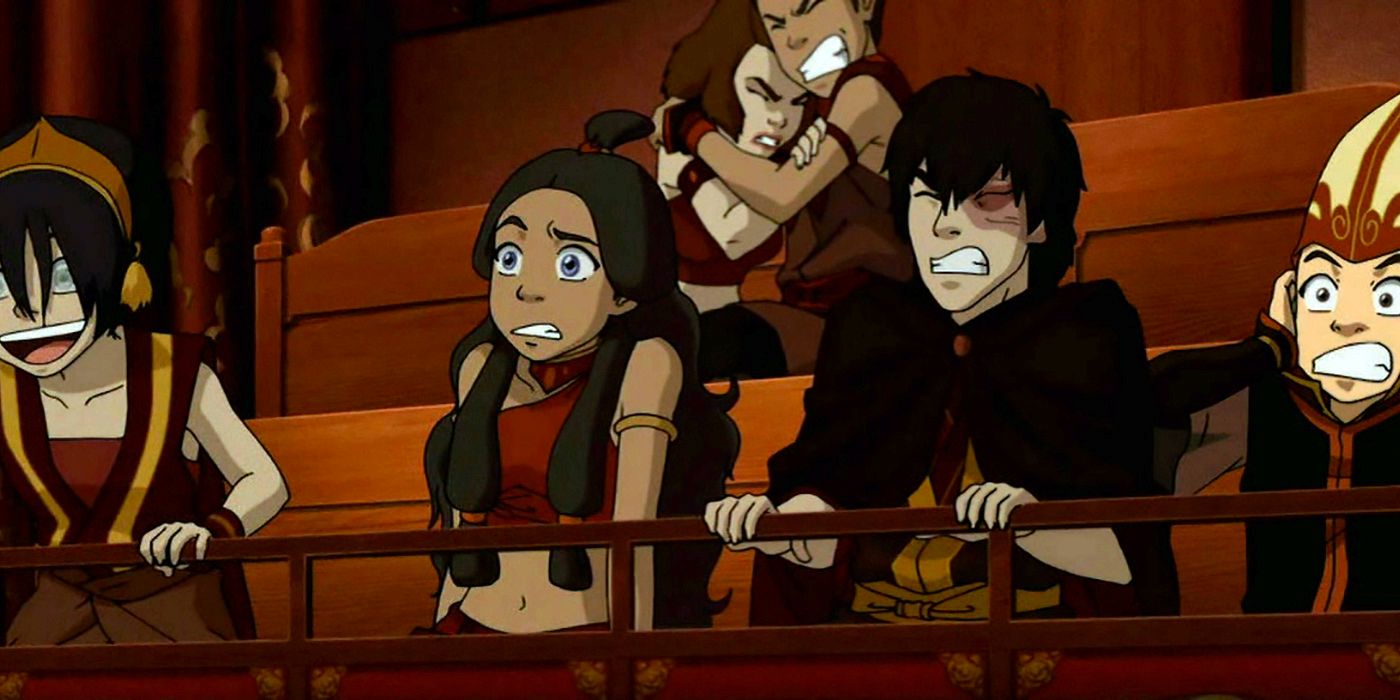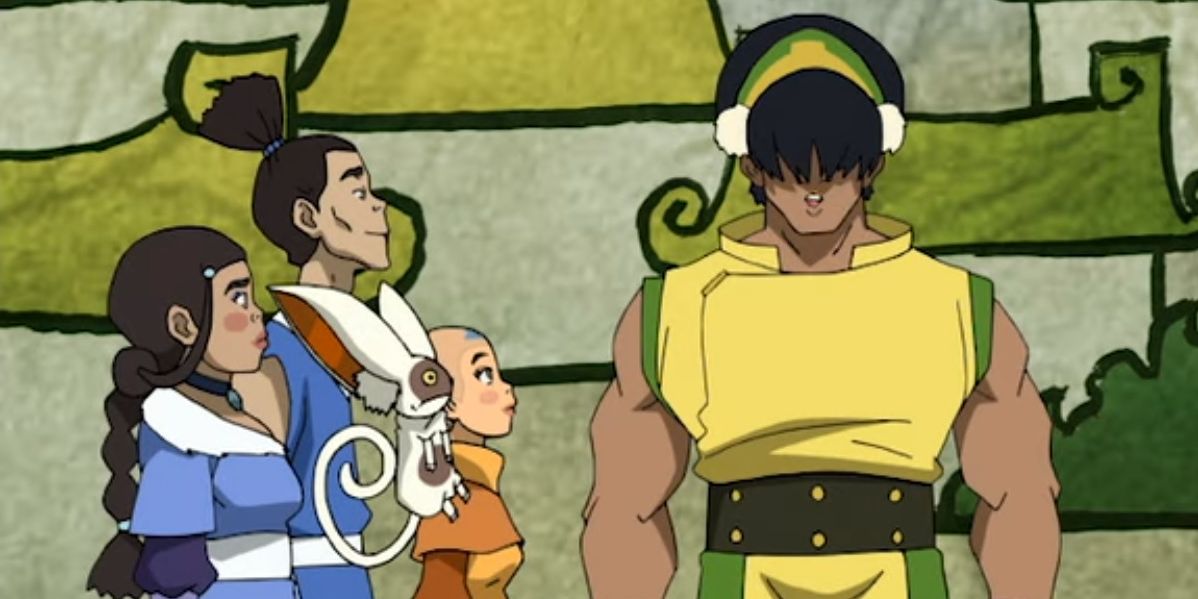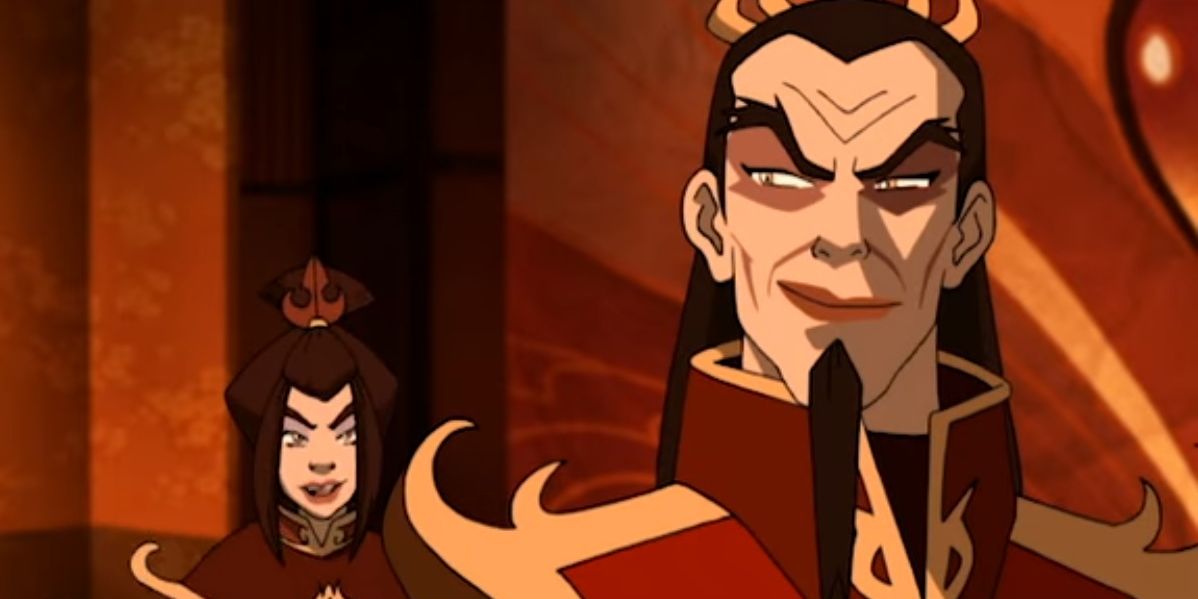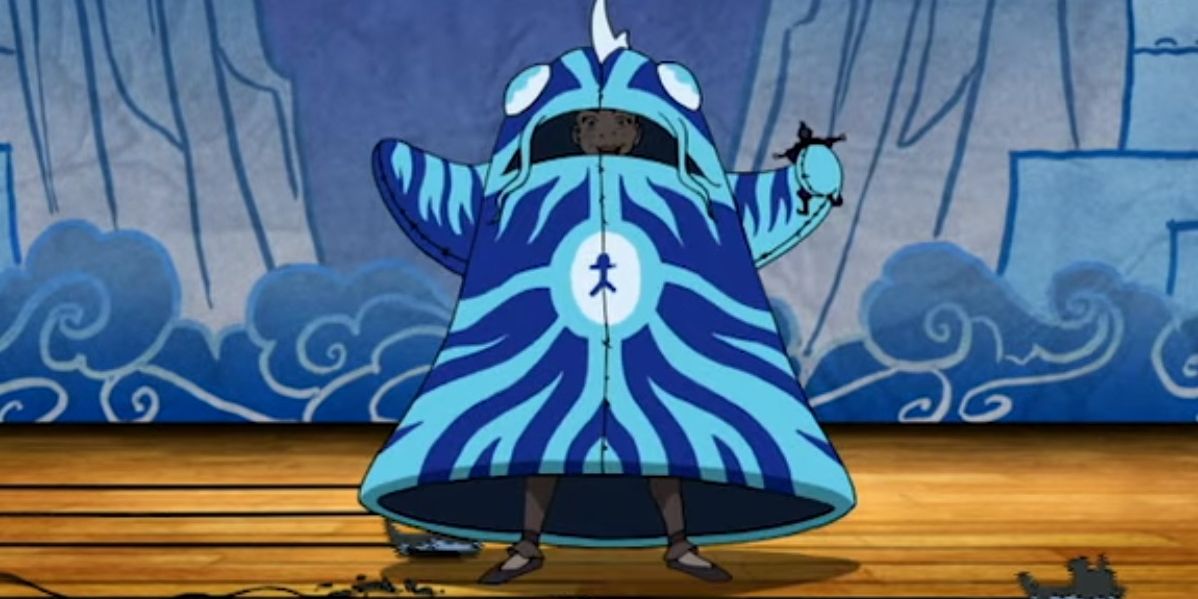Amidst the seriousness and life-changing field trips towards the series’ finale, Avatar: The Last Airbender throws a curveball with a comedic recap episode called "The Ember Island Players." In the episode, the titular acting troupe put on a fairly accurate rendition of Team Avatar's major adventures in its play, The Boy in the Iceberg.
However, this then makes one wonder just how The Ember Island Players got all of that information and what the play truly accomplished.
WHO ARE THE EMBER ISLAND PLAYERS?
According to Zuko, the Ember Island actors are notorious for butchering its plays. Nevertheless, The Ember Island Players thrive with its razzle-dazzle effects and over-the-top acting that somehow pegs Team Avatar perfectly. The small troupe exaggerates the team's appearances and personalities to ridiculous degrees that they are compelled to reevaluate themselves and reflect on their journey with Aang.
For Team Avatar, the play is a highlight of their best and worst moments, much to their chagrin. But perhaps, for the Ember Island Players and the Fire Nation audience, the play serves as a different kind of reflection, one that is an exciting adventure to learn and put themselves in the perspective of their nation's enemy.
GATHERING THE SOURCE MATERIAL
The Ember Island Players may be performing Fire Nation propaganda, but its intentions are more in favor of Team Avatar.
The Boy in the Iceberg was actually written by Puan Tin, an Earth Kingdom playwright. While the play is intended to be Fire Nation propaganda, it fails to truly vilify Team Avatar because Puan Tin does meticulous and accurate research. According to the poster, Puan Tin gathered information on the Avatar “from the South Pole to the heart of Ba Sing Se. His sources include singing nomads, pirates, prisoners of war and a surprisingly knowledgeable merchant of cabbage.” Counterintuitive to propaganda research, the playwright travelled the world, interviewing an array of people who interacted with the Avatar instead of pulling from a single or fabricated source.
Wherever the Avatar went, Puan Tin wasn't far behind. This means he spoke to many of the same people with whom Team Avatar interacted. In the South Pole, Puan Tin would’ve spoken to such key characters as Katara’s grandmother and possibly Master Paku and seen places like the Southern Air Temple. This might also even help explain why the play itself seems sympathetic to those who stand against the Fire Nation, as seeing such a place would certainly make it hard to believe the Fire Nation is innocent.
THE PLAY ISN'T ALL BAD
As for just why the play would be more comedic than serious and avoid adopting the tone of Avatar: The Last Airbender in key areas, one practical explanation is that Puan Tin is a foreign writer with Fire Nation sponsorship; he wouldn't exactly want to bite the hand that feeds him.
However, there's another possible reason that also makes sense. Puan Tin wanted to make the Avatar's adventures easier to consume, entertain the audience and let them form a positive bond with the team. Perhaps due to his Earth Kingdom heritage, Puan Tin tries to show a more sympathetic portrayal through comedy. An example of this intention would be the Northern Water Tribe arc the play covers when the Aang actress dons an ocean spirit costume and destroys toy Fire Nation ships with glee yelling, “The Avatar is back to save the day!” Immediately afterward the crowd cheers along, even though the scene portrays a major military loss and embarrassment for their nation.
In terms of acting, the actors and actresses hyperbolize a recognizable trait in each team member but still show them in a positive light. As the storyteller, The Ember Island Players have all the power to portray Team Avatar as evil (it could've incorporated the cabbage merchant's bias for instance), but it doesn't. The actors have developed a connection with the team and become part of a meta-fandom. They've joined in on the inner circle of ships like Zutara and running jokes about Zuko's honor or Sokka's uncle humor.
The actors have also created a necessary space for Team Avatar to explore big moments that would prepare them before Sozin's Comet. The play dredges up Aang and Katara's anxieties about their relationship, but the play's ending nudges the two to prioritize winning the war over romance. And for Zuko, it is a final reminder to solidify his self-worth; he needed to revisit the past and recognize that his mistakes were efforts to change and be good.
On the contrary, the play portrays Fire Lord Ozai as a prime example of caricatured evil. With his Joker-like makeup and sinister evil laugh, the Fire Lord actor makes his egomaniacal motives for world domination clear. He is one-dimensional and occupies little space in the overall story of the play. The only reason the audience would cheer him on is because Ozai is their emperor.
The finale of the play may have ended with Aang's death, but the overall result is an Avatar fan base growing within the Fire Nation. The Ember Island Players have traveled the Avatar's path and have learned to grow along with the audience. The Ember Island Players empathize with Team Avatar; it shares our fandoms and ships; it compels the team to reflect because of its performance. And with the end of the Hundred Year War, hopefully, the players can put on the true ending they deserve by building empathy between people of all nations like it truly intended.




